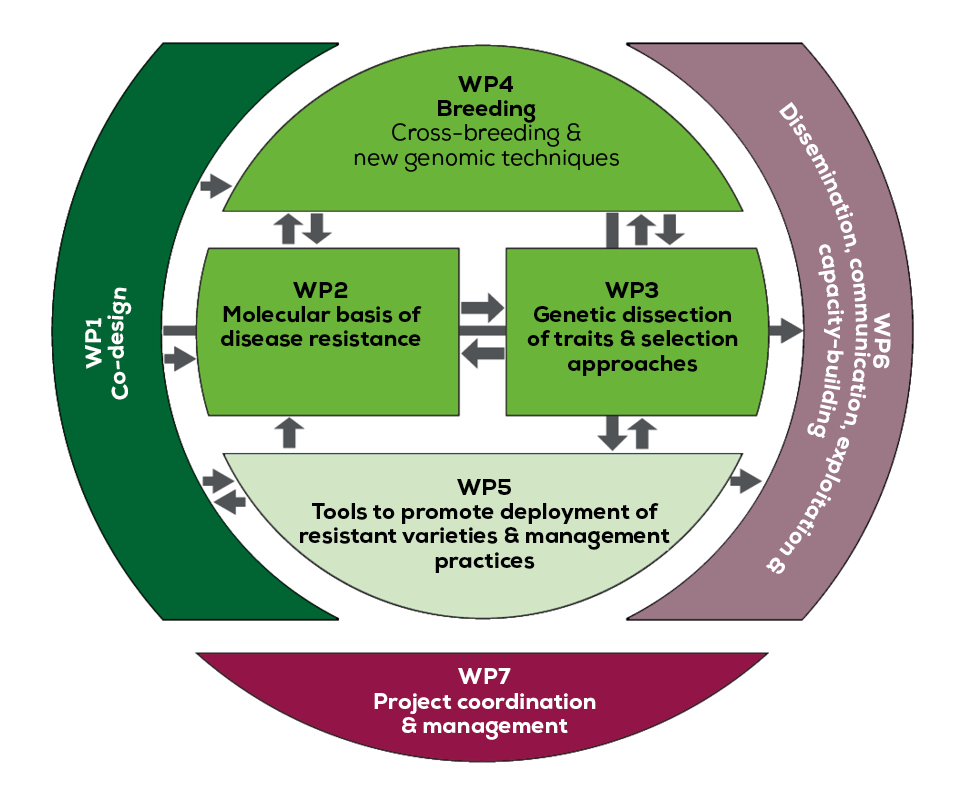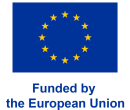About
Work packages
Work packages
WP1. Co-design
- Ensure cross-value chain commitment.
- Provide solid planning base and knowledge.
- Identify barriers and limitations.
- Overcome the hurdles.
- Realize market pull and breeding push for disease resistance varieties (DRVs), including exploring the use of existing labels or drafting specifications for new ones.
- Development of implementation support, both individually and across countries.
- Recommendations for international market strategies
- Development of innovative marketing approaches for Piwi wines
WP2. Molecular basis of disease resistance
- Understand the molecular basis of the resistance to grapevine pathogens and grapevines’ interactions with their environment.
- Provide knowledge on the durability potential of R genes currently used in breeding programs.
- Provide new candidate resistance genes based on different resistance mechanisms.
WP3. Genetic dissection of traits and selection
- Use Quantitative Trait Loci (QTL), Genome-wide Association Studies (GWAS), and Genomic Selection (GS) approaches to dissect the genetic determination of resistance to black rot (BR) and Botrytis bunch rot (BBR).
- Understand the impact of the introduction of resistance genes.
- Design new accelerated breeding schemes.
WP4. Cross-breeding and new genomic techniques
- Address the demand for new genotypes with reinforced fungal resistance via crossbreeding reproducing regional wine styles of premium wine regions and broadly used varieties for bulk wine production in 4 major European biogeographical regions.
- Generate resistant clones of major European wine grapes via New Genomic Techniques (NGTs) and provide the value chain and policymakers with evidence of their genome stability and genetic trueness-to-type.
WP5. Tools to promote the deployment of resistant varieties and management practices
- Expansion of a network of observatories of resistant varieties in production and experimental conditions.
- Test and implementation of specific Integrated Pest Management (IPM) practices, supported by existing Decision Support Systems (DSS).
- Biodiversity assessment by microbiome diversity on berries from resistant varieties and monitoring of pollinators.
- Development of tools for disseminating best practices to farmers and winemaking professionals.
- Raise growers’ awareness of the importance of preserving natural resistances.
WP6. Dissemination, Communication, Exploitation, and Capacity-building
- Create and promote capacity building, training, workshops, education, and field days.
- DRV communication, and awareness raising.
- Disseminate the new knowledge, main achievements, and benefits of DRVs through this project to policymakers, the professional sector, market actors, consumers, and the public.
- Promote and boost the relations of GrapeBreed4IPM partners with the vitivinicultural sector and public and private institutions.
- Identification, and analysis of existing situations and prospering business models that made use of resistant varieties in different settings for experience sharing in training for exploitation purposes.
WP7. Project coordination and management
- Steer the project to ensure that the project reaches its objectives and addresses all unexpected situations, be these scientific, technological, environmental, or social.
- Put in place the procedures and tools needed to ensure that the project progresses in compliance with the Grant Agreement, the Consortium Agreement, and the project work plan and produce timely and quality results.
- Organize project meetings, prepare project reports, and ensure efficient collaboration and internal communication among partners
- The proper management of all data generated by the project must be ensured.
Different WPs and how they interact between one another



































